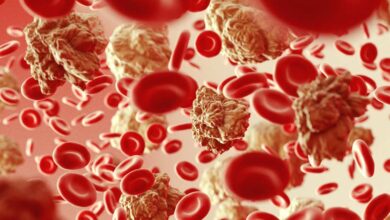Obesity Treatment: A Comprehensive Approach to Lifestyle Change

Treating obesity requires a comprehensive and integrated approach that focuses on long-term lifestyle and health behavior changes. The main methods of treating obesity include:
Lifestyle Modifications
Healthy Diet
A healthy diet is based primarily on reducing daily calorie intake so it is less than what the body burns — this is the foundation of weight loss.
Equally important is focusing on increasing the consumption of nutrient-rich foods, such as:
- Fresh fruits
- A variety of vegetables
- Whole grains that provide energy and fiber
- Lean proteins that help build muscle and increase satiety
- Low-fat dairy products that provide calcium and essential vitamins
It is also essential to learn how to control portion sizes. Knowing how much food is appropriate and avoiding overeating helps maintain caloric balance and prevent weight gain.
Regular Physical Activity
Regular physical activity is a key part of a healthy lifestyle and is effective for both weight loss and maintenance. This includes aerobic exercises such as:
- Brisk walking
- Running
- Swimming
- Cycling
It is recommended to engage in at least 150 minutes of moderate aerobic exercise per week, or 75 minutes of vigorous-intensity exercise per week.
Strength training is also important for increasing muscle mass, which boosts the basal metabolic rate (BMR) — meaning the body burns more calories even at rest. It’s recommended to engage in strength training that targets major muscle groups at least twice per week.
Behavioral Changes
Behavioral change is a key component of achieving and maintaining weight loss. It starts with:
- Setting realistic and measurable goals, which help track progress and maintain motivation
- Self-monitoring to understand behaviors related to eating and physical activity by:
- Logging meals and food types
- Recording exercise (type, duration, and intensity)
- Regularly tracking weight
This allows individuals to identify unhealthy patterns and replace them with healthier behaviors.
Medication Therapy
In addition to lifestyle changes, medication may be used as a supplemental method for people with severe obesity or health conditions requiring medical intervention.
Weight-loss medications work through various mechanisms such as:
- Suppressing appetite
- Inhibiting fat absorption in the intestines
Weight-loss injections have become increasingly common. These are subcutaneous injections that help individuals with obesity or related conditions lose weight by:
- Regulating appetite
- Reducing food intake
These medications are used in conjunction with a reduced-calorie diet and increased physical activity.
It is essential to consult a specialist before starting any medication to determine its suitability, explain proper use, and discuss potential side effects.
It’s important to remember that medication is only one part of a comprehensive weight-loss plan that includes continued commitment to healthy habits for long-term success.
Minimally Invasive Procedures
There are several non-surgical procedures for weight loss, such as:
- Gastric Botox
A relatively non-surgical weight-loss treatment. When injected into the stomach muscles, Botox works by:
- Slowing gastric emptying, helping food stay in the stomach longer and creating a feeling of fullness
- Reducing the secretion of ghrelin, the hormone responsible for stimulating appetite
The procedure is done via upper endoscopy, where a flexible tube with a camera is inserted through the mouth into the stomach. Botox is then injected into specific areas of the stomach wall. It takes about 15–20 minutes and typically requires only mild sedation or local anesthesia.
Who qualifies for gastric Botox?
- Individuals with a BMI between 27 and 35
- Those who did not succeed with diet and exercise alone
- People looking for a less invasive alternative to surgeries like gastric sleeve or bypass
- Those who are medically fit for Botox and endoscopy
- Gastric Balloon
A non-surgical method that involves inserting a medical-grade silicone balloon into the stomach and filling it with sterile saline. The balloon:
- Takes up space in the stomach, helping the patient feel full faster
- Reduces the amount of food consumed in each meal
- May delay gastric emptying, which increases the sense of satiety
The gastric balloon is a temporary method. It is removed after 6 to 12 months, depending on the type and the physician’s recommendation.
Surgical Procedures
Bariatric surgery is often reserved for individuals with:
- A BMI of 40 or higher, or
- A BMI of 35 or higher with serious obesity-related health problems
- Who have not succeeded with other weight-loss methods
Sleeve Gastrectomy (Gastric Sleeve)
One of the most commonly performed and effective surgeries for treating severe obesity. It is approved by health authorities globally due to its significant impact on:
- Weight loss
- Improving or curing type 2 diabetes
- Reducing blood pressure
- Improving lipid profiles
How it works:
Approximately 80% of the stomach is removed, leaving a narrow tube or “sleeve” that limits food intake and reduces the secretion of the hunger hormone ghrelin, resulting in reduced appetite.
Surgery results:
Most patients lose 50–70% of their excess weight within the first 12–18 months post-operation. It also leads to significant improvement in overall quality of life.
Conclusion
Treating obesity requires a personalized and integrated approach. Although diet, exercise, and behavior change are essential, many people may need additional medical, minimally invasive, or surgical treatments to achieve lasting results.
Choosing the appropriate treatment should be made in collaboration with healthcare professionals, taking into account the individual’s medical condition, personal goals, and commitment to long-term change.
A comprehensive approach ensures not only weight loss but also improved quality of life, health, and well-being.














